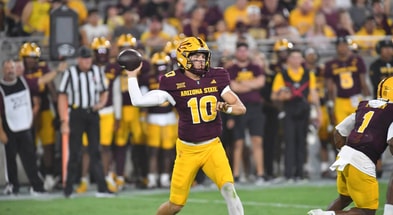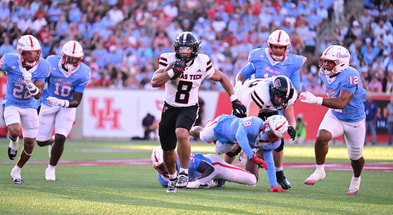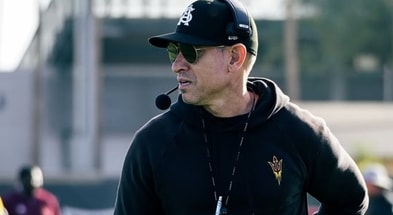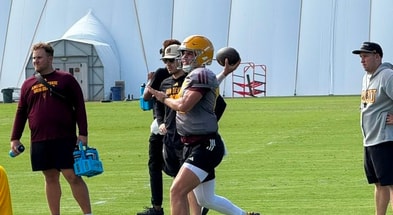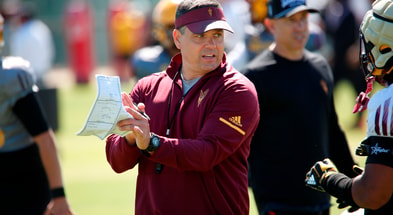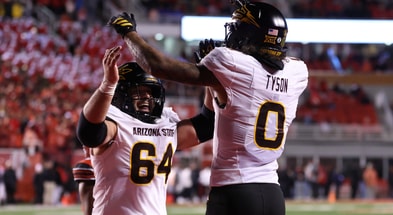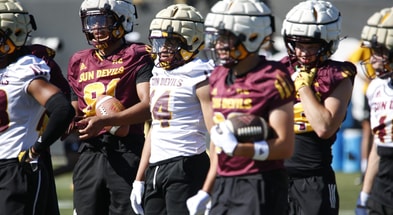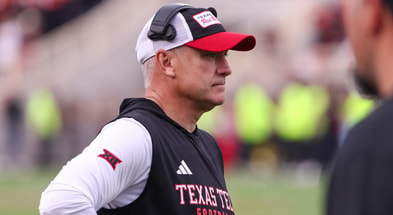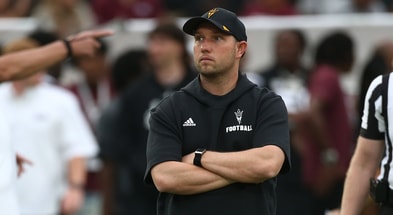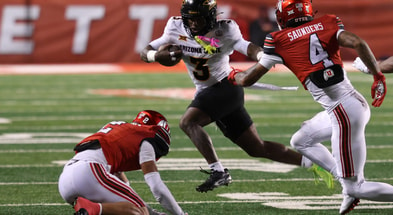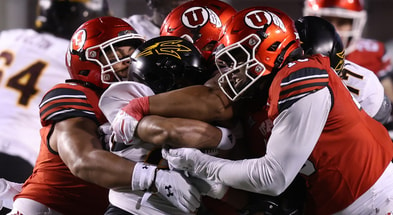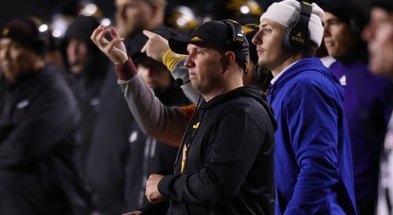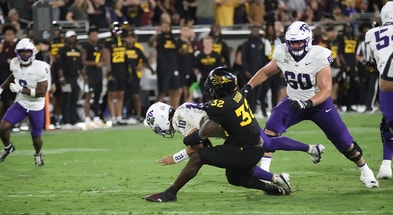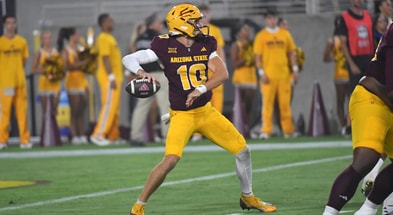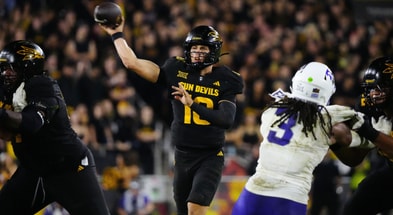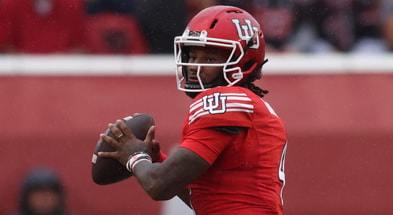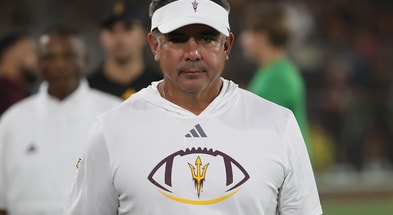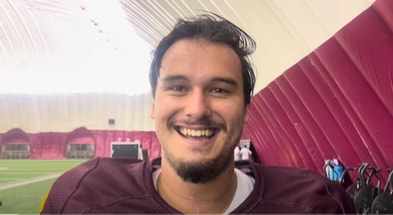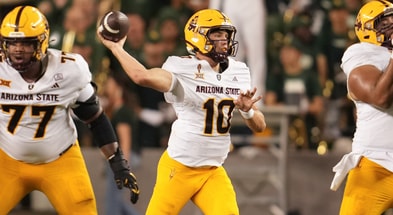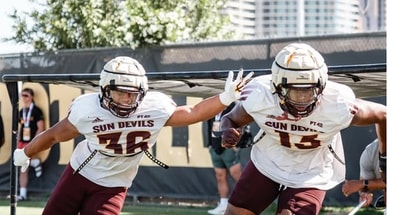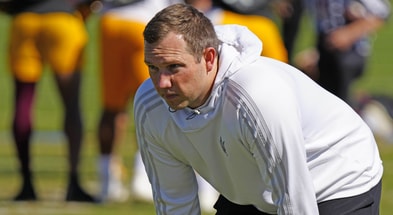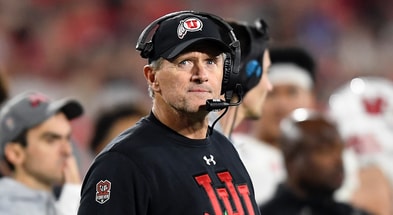Utah’s physical dominance decides 42-10 win
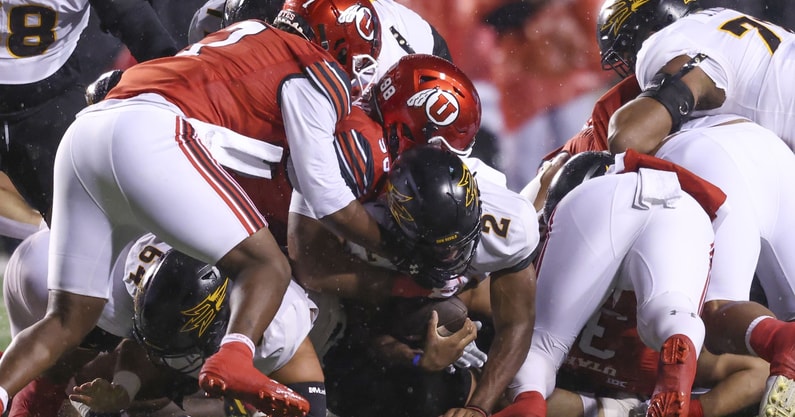

SALT LAKE CITY – When news broke Friday that sophomore quarterback Sam Leavitt would miss Arizona State’s matchup against Utah, the storyline practically wrote itself: could ASU’s offense scrape together enough points to steal a win while its surging defense kept things close? The Sun Devils were coming off their most dominant performance of the year, a suffocating display against TCU that had fans believing this defense would be up to the task.
That optimism didn’t last long.
Utah didn’t just beat ASU; they dismantled them. From the opening snap, it was trench warfare, and the Utes owned every inch of it. What had been billed as a gritty defensive unit ready to carry the load suddenly looked powerless against a Utah offensive line that moved like a professional unit.
A week earlier, ASU’s defense terrorized TCU with 13 tackles for loss, six sacks, and three takeaways, a performance that seemed to announce the rise of a defense capable of carrying the program. But Utah was a different beast. With two potential first-round picks anchoring the line, sophomore Caleb Lomu and junior Spencer Fano, the Utes showcased the difference between strong and elite.
Senior linebacker Keyshaun Elliott called it “a great chance for our front seven to show what we’ve got.” By Saturday night, that chance was buried under 276 Utah rushing yards. Junior quarterback Devon Dampier ran for 110 yards and three touchdowns. ASU’s defense, so dominant a week ago, didn’t record a single tackle for loss or sack. ASU’s (ASU 4-2, 2-1 Big 12) offensive line was just as outmatched. After graduate lineman Ben Coleman exited early with an injury, Utah’s front completely took over, collapsing pockets, blowing up runs, and draining any rhythm from the offense. By halftime, the game already felt decided. Utah’s (5-1, 2-1) physicality wasn’t just visible; it was overwhelming, the kind that breaks wills, silences sidelines, and delivers final scores like 42 to 10.
When the dust settled, four different Utah players had topped 40 rushing yards. It wasn’t about one back’s brilliance but a line that bulldozed through everything ASU threw at it. At times, it looked so effortless that even Utah’s tight ends might have found daylight behind those blocks.
“Forty-two rushes, 276 yards is pretty good,” Dillingham stated. “When Coach Whittingham says that’s the best O-line he’s had, that tells you all you need to know, and firsthand. I mean, I haven’t played them all, but man, that was a good one. And this scheme suits them with the triple and the plus-one runs, and they’re a hard team to stop.”
Containing Dampier had been ASU’s top priority all week, and they couldn’t have failed more completely. His first drive ended with a 12-yard touchdown burst. His next big run came early in the second quarter, a 24-yard sprint that turned a close game into a rout. Each possession felt like déjà vu: another broken tackle, another gaping hole, another score.
“They were running speed sweeps, getting to the edge, quarterback plus one run,” Dillingham noted. “Anytime you have a quarterback go for 12 yards a carry, 10 rushes for 120 yards, and those aren’t scrambles. Those are direct runs. That’s the plus one that you get in the triple option game, right? If you look at their running backs, like they ran the ball well, right? But it wasn’t nearly as drastic as the quarterback…So they just outcoached us, outplayed us, absolutely whooped our butt. It’s the first time we’ve really gotten whooped like that in a long time.”
The Utes didn’t need to throw. Dampier attempted just 12 passes all game because Utah could do anything it wanted on the ground. Their offensive line, not just Lomu or Fano but the entire five-man front, dictated everything. It wasn’t fancy. It was ruthless. Six rushing touchdowns later, Utah had its most ground-dominant scoring performance since 2021, and ASU had no answers.
Afterward, Dillingham admitted he was “surprised” by just how thoroughly his team was overpowered. It was supposed to be a strength — a veteran unit that had spent over a year building chemistry, bulking up, and preparing for exactly this kind of challenge. But against Utah’s force, all that preparation looked like paper armor.
“They got us physicality wise,” Junior defensive linemen CJ Fite admitted. “They physically beat us. We weren’t making tackles. We were thinking too much. Once you start doing all that, it just throws you off your game. So they got us tonight.”
Utah never lifted its foot. Three rushing touchdowns before halftime made it 21-3, another to open the third quarter made it 28-3, and by the time ASU pieced together anything resembling an offensive drive, the scoreboard already read like a verdict.
On the other side, ASU’s usually reliable rushing attack sputtered. The plan was simple: let redshirt senior Jeff Sims, not the most polished passer but a dangerous runner, lead an option-heavy offense alongside junior running back Raleek Brown. But when Coleman went down with 4:08 left in the first quarter, everything unraveled.
With redshirt senior Jimeto Obigbo shifting to left guard, ASU’s early momentum vanished. Coleman’s injury halted a promising first drive, and on the very next play, a flag came flying. “Holding, number 55, offense.” The drive stalled, ending in a field goal.
“Obviously, the first drive with Ben in the game, we drove down the field, and the first play left, we got a holding call,” Dillingham stated. “Which really ended that drive, which was catastrophic.”
That wouldn’t be Obigbo’s last costly mistake. Another penalty came early in the third quarter on a crucial third-and-eight, and from there, ASU never regained its footing. Sims was sacked five times—three on one disastrous drive to open the fourth—and finished with just 52 rushing yards on 21 carries.
Utah collected seven tackles for loss in total. With no threat through the air, the Utes brought pressure freely, crashing through ASU’s line like it wasn’t there. Raleek Brown managed 67 yards on 14 carries, most of them hard-earned, often requiring two or three jukes just to pick up a yard or two.
By night’s end, ASU’s defense looked gassed, its offense broken, and its early-season confidence scattered across the Rice-Eccles turf. What was supposed to be a measuring-stick game turned into a reminder of how far the Sun Devils still have to climb to stand among the Big 12’s elite.
“I told the guys in the locker room, we got out physicalled, we got out coached,” Dillingham disclosed. “…You’re not going to win a ton of football games if you’re not the most physical football team. And we were not the most physical football team. And it wasn’t even close tonight. And they were. And they play a brand of football that if you’re not going to match their physicality, if you’re not going to be able to tackle, you have no chance. And that was really what the game came down to was blocking and tackling. And it’s amazing how simple the game is, but that’s why they’ve won for a long time here: they have a culture where they block and tackle at such a high level.”
